The Devil In Me Review: "Genuinely Unnerving And Leaves A Lasting Impression"
Read here for a full rundown of The Dark Pictures Anthology's newest title - The Devil In Me.
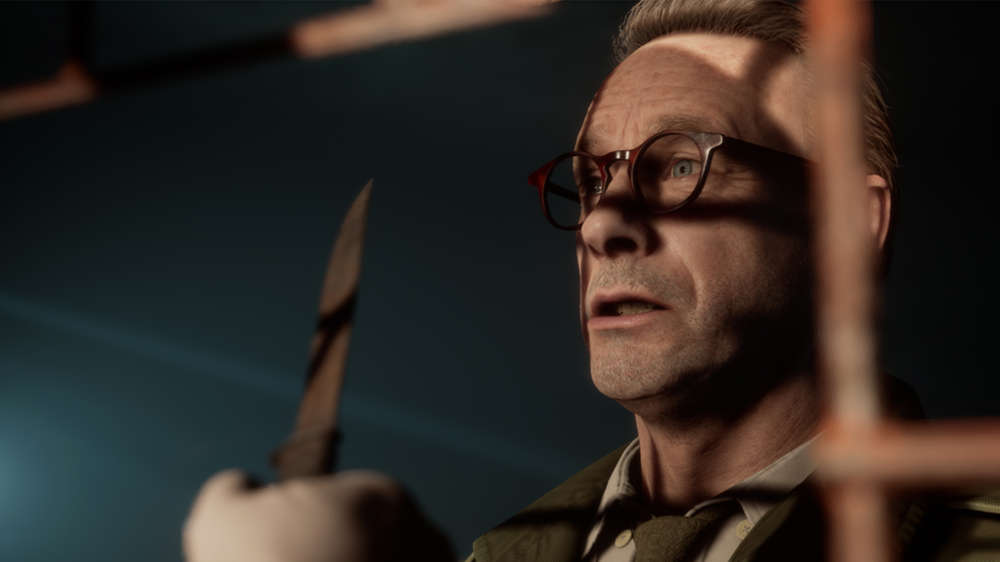
The Devil In Me is the fourth instalment of the Dark Pictures Anthology horror series and is just as nerve-wracking as its predecessors. As the season finale, the game is slightly longer than previous titles and will take around 8-10 hours to complete, depending on how thorough you are and if you aim to get all collectables in the game. The price point reflects this and currently sits at £34.99 on Steam, a cheaper price for a contained story. It is not necessary to play the other Dark Pictures games, The Devil In Me is a stand-alone game centred around a group of filmmakers who travel to an isolated island at the behest of the mysterious Mr Du'Met. There, they discover that all is not as it seems, and a crime documentary quickly turns into a horrifying reality.
- If you love Supermassive Games titles, check out our previous review for The Quarry.
Choose Or Die
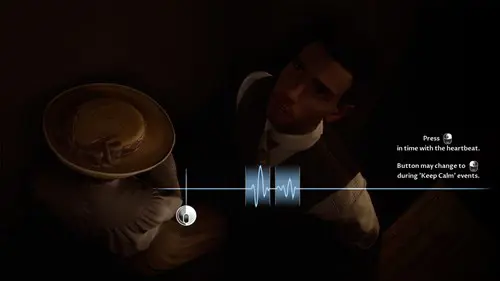
As with other Supermassive Games titles, notably Until Dawn and The Quarry, The Devil In Me is a choice-based horror game where the paths you choose can mean life or death for the characters. You must navigate through the game and perform quick time events (QTEs) in high-intensity situations. A misstep can spell death for your favourite character so you must always be present and aware of your surroundings.
The game does an excellent job of lulling you into a false sense of security with a measured opening, slowly leading into the bulk of the plot. Jump scares do happen, and with great effect, as they are not over-used, and players won't become numb to them as a result.
Other than the usual button-press QTEs these games are fond of, The Devil In Me introduces a new mechanic. During hide sequences where characters must calm themselves down to not give away their positions, you'll have a mini-game where you must click the button prompt in time to the character's heartbeat. With the sound of the pulsing heartbeat in your ears, the escalating string music, and the visuals of a killer mere meters away from you, this mechanic does a great job of adding tension. It isn’t overdone either, the game paces out its use and thus prevents it from getting repetitive in later sequences.
Like with other titles in the franchise, the game has the option to be played as a solo adventure or with co-op. You can play online with a friend with the 'Shared Story' mode or opt for the 'Pass the Pad' couch co-op option in which you'll choose which characters you wish to play as and submit control over to your friend during their chosen character's sequences. The versatility of this instantly raises the stakes of the game as it issues people with the responsibility of keeping their characters alive.
Setting is Everything
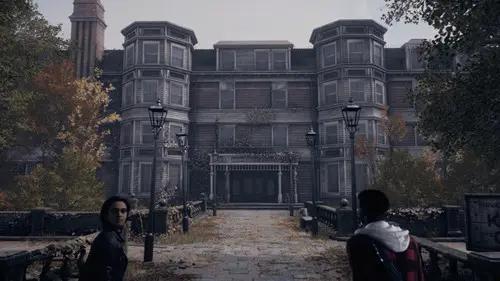
The plot takes place in a hotel built on a remote island. The hotel is a replica of the 'Murder House' a notorious hunting ground for H.H. Holmes, a man dubbed as America's first serial killer. The original hotel was built in the 1800s Chicago, equipped with illusory doors, fake walls and disorientating hallways that frequently changed. It served one purpose, to kill and torture its unwitting hotel guests, leading them into deathly traps styled as something out of the Saw franchise.
Present day, our group of protagonists are a film crew making a documentary about the infamous H.H. Holmes. They are approached by the mysterious Mr Du'Met who has inherited a replica of the hotel from a distant relative and has invited the crew to visit the attraction as it serves as the perfect backdrop to their murder documentary.
As the story progresses it becomes clear that the hotel is a genuine replica, the horrors aren’t as fake as they initially seem, and the crew are stalked by a violent madman who bears a striking resemblance to the deceased H.H. Holmes.
The mystery of who the killer may be and who is setting up these nefarious traps is enough of a hook to keep players invested as they investigate the hotel of horrors. All is not as it seems, and you'll need to be quick thinking to escape the night with all the crew intact.
The game has a steady and perhaps slow start. This is to build up the tension and lay the groundwork of the plot, something that horrors too frequently skip these days. Luckily, the payoff is worth the slight wait and once the game decides to plunge into chase sequences, gore, and high-risk manoeuvres, it doesn’t hold back at all. As the game takes its time to set up the plot, red herrings and hooks can be cemented into the story and return later for satisfying results.
Not Just Another Teen Drama
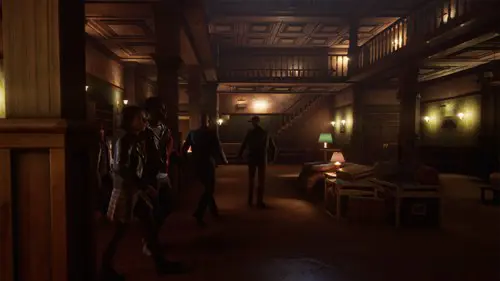
We are quickly introduced to our leading characters. Surprisingly, these aren’t teens working on a college film project – a trope which could have been an easy cash grab for The Devil In Me – instead, our characters are all adults ranging within the late 20s bracket, led by their older, irritable but ultimately charming director Charlie. As a result, the characters have more personality and don’t fall into the bracket of 'jock, nerd, class clown, mean girl' and other stereotypes that Until Dawn delighted in.
The game facilitates this beautifully with the idle dialogue between characters which takes place as you look for clues early in the game. The characters are dynamic and have realistic repartee with each other. For the first time whilst playing a horror game, there weren’t any characters I instantly disliked. Even Kate, the "mean girl" of the group is a more complex character than you may originally think and has her own battles she is struggling through.
That’s not to say the game doesn’t embrace certain tropes, but it is self-aware in doing so. Some tropes have a fond place in horror and always will.
Business as Usual
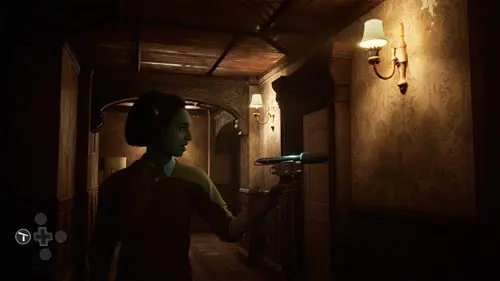
The film crew aspect of the game isn’t just a plotline to set up their reasoning for being at the hotel. Each character has equipment that they specialise in, which unlocks different game mechanics. Mark is the cameraman; he has a tripod that can access high-reaching items and a camera flash which can illuminate his surroundings briefly. Jamie always has a torch as she is the head of lighting. Charlie is the director who manages the team, he has a card which can open locked cabinets and a lighter as a source of light as he is a serious smoker. Kate is the lead presenter and has a light attached to a small vanity mirror she carries around. Lastly, Erin is the sound engineer, she has a boom mic and headphones which allows her to hear approaching footsteps and far away voices, she is also an asthmatic and has an inhaler she needs during certain levels.
This is an exceptional slice of detail with various levels of success. There is a sequence in the game where Erin hears noises coming from the hotel hallways. You must use the mic to follow the source of the noise and start to hear more voices come through, some of which sound very familiar. As you move through the halls, they seem to change around you, disorientating your field of vision and making you walk back on yourself in a way very similar to Silent Hills P.T. This sequence of the game is genuinely unnerving, the sound design is impeccable, and the game knows when to include high-pitched string instruments, when to use low drumbeats and when to simply stay quiet and let the players fill in the silence with their anxious thoughts. This is just one sequence of many which leave a lasting impression.
Unfortunately, where equipment mechanics were less successful was Mark's camera flash. Using a camera flash to quickly highlight objects could inflict self-made jump scares. For example, during one section of the game, I used the flash which illuminated a group of menacing-looking mannequins in the corner of a room. This was a great payoff but unfortunately, for the most part, I was increasingly frustrated with how little of the space Mark could light up and found myself wishing for any other character who had a valid source of light.
In general, the game is very dark; you will most likely have to adjust the brightness past the recommended levels of the game. There comes a point when darkness isn’t spooky anymore its just frustrating as you can't see where you're meant to go to progress the plot.
Keep Breathing – That’s The Key!

As sound design goes, The Devil In Me gives it a suitable level of credence, there is even an operatic symphony added to a moment in the game which is extremely well-executed and bares down on players in a crescendo of tension. I especially appreciated the subtle nod to Until Dawn in the choice of the song 'Oh Death' for the opening title sequence. It was a perfect choice to immediately set the tone of the game and draw me in.
Thankfully, the game doesn’t enforce a stamina bar on players – that’s a different scale of torture right there. It does, however, inject heavy breathing sounds once your player jogs for less than 10 seconds. Heavy breathing in cutscenes where your character is hiding in a cupboard and waiting to be discovered by a killer is reasonable, but after playing the game for nine hours and having non-stop breathing in your ears it can get tiresome. Charlie's rattled breath is the only anti-cigarette advert you'll ever need in your life.
Lights, Camera, Murder

The narrative clues of the game are where it shines, and the high-intensity situations that characters find themselves in demand quick reflexes and intuition on your part. The game is like a Saw meets Haunting of Hill House collaboration, where our characters are reduced to rats in a maze, completely controlled by their nefarious overseer.
Camera work plays an intrinsic role in this, like previous Supermassive Games titles, the camera is mostly fixed on the characters, but sometimes shifts perspective to an unseen person highlighting that someone is watching the group without them knowing. This is a clever use of camera work and bridges the overlap of games to TV as a genre. Frequently we will see a camera view taken from trees, or on the other side of a one-way mirror unbeknownst to the hotel guests.
To add to the dramatic flair, chapters will be intersected with monologues from The Curator, a curious fellow who frequently breaks the fourth wall to address the player directly about what choices they have made so far in the game. This won't be new to returning fans of The Dark Pictures Anthology, The Curator mostly exists to frame the story amongst the collection of others and is used as a narrative device. Luckily, he doesn’t appear often enough to take you away from the drama of the main plot.
Another returning feature to the franchise is the Dark Pictures, these are picture frames that give players premonitions of events to come. These often depict character deaths and give you clues as to how deaths may occur. I may be a little slow, but for the most part, these didn’t help me avoid death but simply put me further on edge and kept me looking out for danger. This may be the real use of the Dark Pictures, to unsettle the player rather than lend a real helping hand.
From Vacation To Villainy
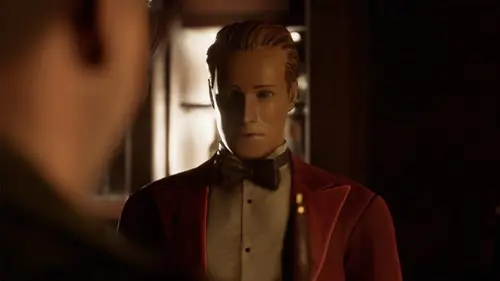
The Dark Pictures Anthology: The Devil In Me is a superb example of what a choice-driven horror can be. It is a polished game that feels like a true homage to slasher horror. The game doesn’t do anything particularly innovative, the Supermassive Games framework is established enough now that most people will know what to expect when playing one of their games.
Horror tropes are lovingly incorporated but not relied upon too heavily and the overarching plot is steeped in enough mystery to keep you invested as you traverse through the hotel of horrors. The game can be a little clunky when controlling the characters, turning can be cumbersome but not enough to cause any real issues.
As a narrative-driven game, the only real drawback is that the plot will sometimes progress if you interact with an object, this propels you into another sequence and potentially means you miss out on further exploring areas for collectables or clues. These clues are highlighted well however and will often glimmer white making it difficult to miss many if you're set on exploring to the fullest.
Overall, the game is a solid option to kill a few hours, or in fact, kill a few people if you wish to do so.
4.5/5
Reviewed on PC. Code provided by the publisher.
Comments
